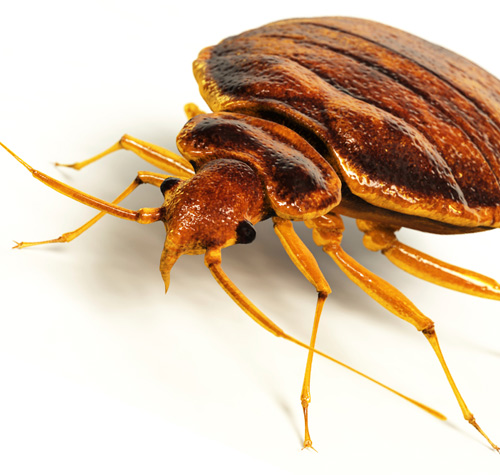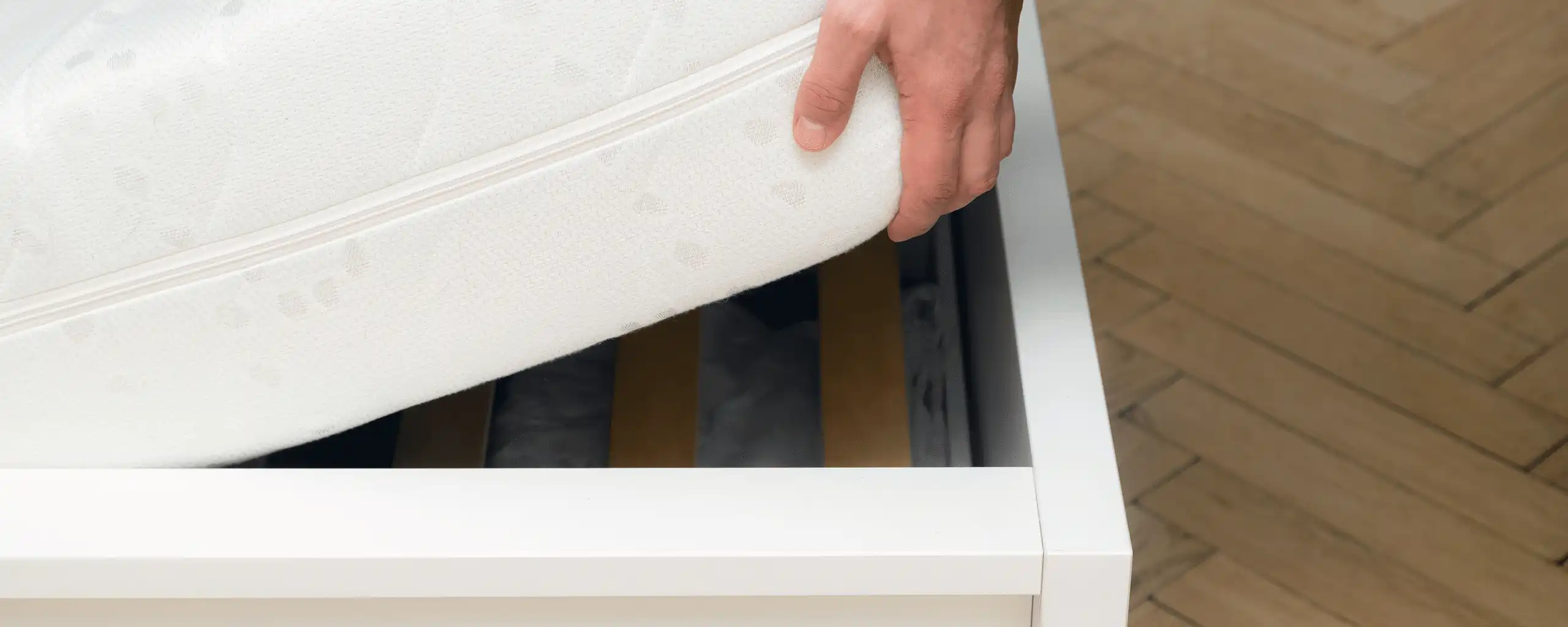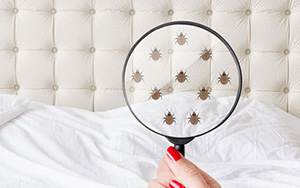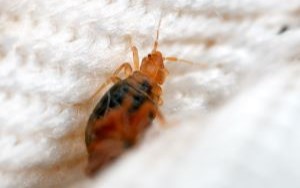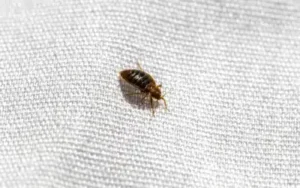Bed bugs have beak-like mouthparts (proboscis) that are specifically designed to cut skin and suck blood. The proboscis is kept tucked beneath the bed bug when not in use.
When bed bugs feed, the proboscis is placed at a right angle to the skin, and the bugs rock back and forth during insertion. Once in the skin, cutting parts of the proboscis slide through the tissues until a suitable blood vessel is found, and the blood is then sucked up. The pressure from the blood in the vessel is used to transmit the blood into the insect.
The bed bug swells as is fills with blood, and feeding may take anywhere from 5 to 15 minutes. Similar to mosquitoes, when a bed bug bites, it releases anticoagulant and anesthetic compounds that keeps the blood flowing freely and makes the bite virtually pain-free. After feeding bed bugs will quickly return to their hiding place, where they will spend several days digesting the blood-meal.
Bed bugs are sensitive to disturbance and will remove their proboscis to discontinue feeding if the food source moves, or becomes restless. Once settled, bed bugs will re-insert their proboscis and begin to feed again. This behavior can sometimes explain multiple bites in the same, or nearby, location.

